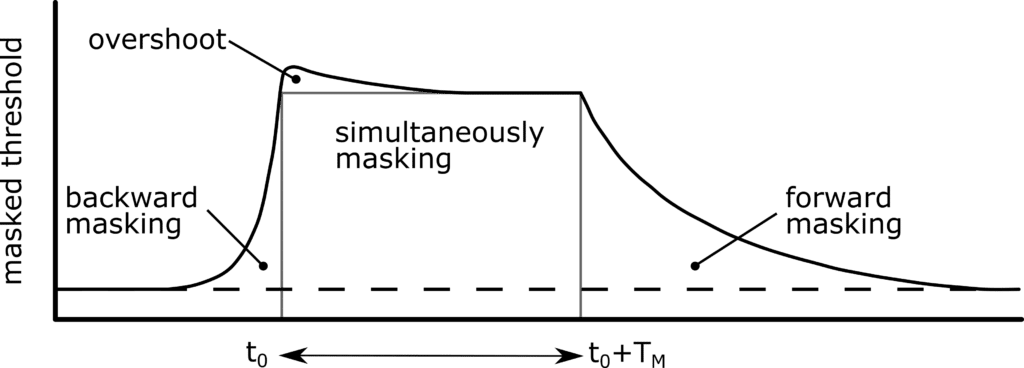Masking is the effect one signal has over another signal due to timing and loudness. The nonlinear behavior of the cochlea causes this phenomenon in the auditory system. This effect is split into two categories: simultaneous and non-simultaneous masking. Its application is throughout audio signal processing, especially in audio coding and compression.
Simultaneous masking occurs when two signals of different frequencies and loudness are played concurrently. The louder signal acts as a masker making the softer signal inaudible even though it is still playing. Masking increases with spectral proximity of the two signals as well. The effect exhibits differences in masking threshold during the transient and stationary states of the masker. During the onset of the masker, the effect is more pronounced; the masking threshold proceeds to level off to the stationary-state level. This phenomenon is called overshoot.

Non-simultaneously masking exists in two forms: forward masking and backward masking. Forward masking is perceived during the offset of the masker. After the masker signal has stopped, the masking threshold is still observed for a few milliseconds before decaying. Backward masking is a more unexpected effect. During the build-up of the masker, the softer signal is masked even though it was initiated before the masker. The brain’s processing of softer signals relatively slower than louder signals, creating the effect. Both the forward and backward masking are dependent on the time duration between the signals. Backward masking occurs within 20 milliseconds before the onset while forward masking occurs within 150 to 200 milliseconds proceeding the offset of the signal.